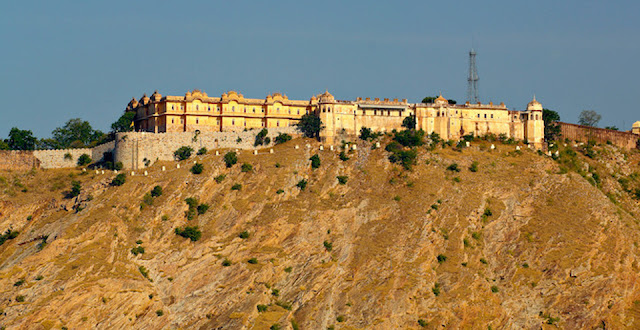Pushkar Is One Of The Five Dhams Or Sacred Places That Are
Highly Revered By Hindus And The Four Other Dhams Are Puri, Badrinath, Dwarka,
And Rameswaram. It Is Believed That In A War, Lord Brahma Had Slained Vajra
Nabh, The Demon, With A Lotus Flower, Whose Petals Drifted Down To Earth And
Were Spread In Three Areas In And Around Pushkar Where Lakes Were Created.
Following The Legends, It Is Said That The Pushkar Lake Was Bounded By 52
Palaces And 500 Temples.
The History Of Pushkar Festival Mentions That All The 330
Million Gods And Goddesses Of Hindu Religion Come To Pushkar Lake On The Day Of
Poornima (Full Moon Night) And Sanctify The Pious. As A Result, Hundreds Of
Thousands Of Pilgrims Congregate For A Holy Bath At The Pushkar Lake To Wash
Out Their Misdeeds And Show Respect To The Sole Brahma Mandir On The Globe. A
Dip In The Lake On This Day Implies Washing Away The Sins. The Water Of The
Lake Is Believed To Have Healing Properties.
This Holy Site Has Been Mentioned In The Hindu Epics Of
Ramayana And Mahabharata As The Adi Tiratha.
In Ramayana, Another Popular Hindu Epic, Pushkar Has Been
Cited Where It Was Mentioned That Rishi Vishvamitra Carried Out A Tapasya In
This Place. In Addition, Menaka, An Apsara From The Heaven, Visited Pushkar To
Take A Dip In Its Holy Waters.
Pushkar Was Cited In Mahabharata, The 2000 Year Old Epic Of
India As The Oldest Religious Hub In India. As Per The Mahabharata, Before
Planning A Program For The Travel Of Maharaja Yudhishthara, "Maharaja
After Entering The Jungles Of Sind And Crossing The Small Rivers On The Way
Should Bathe In Pushkara".
In The Vaman Purana, It Was Mentioned That Prahlada On His
Way To Visit The Holy Places, Also Came Down To Pushkarayana.
Alberuni, The Famous Islamic Scholar Of The Eleventh Century
Depicted Pushkar As A Site Of Tremendous Respect Fo The Followers Of Hindu
Religion.
History Of Pushkar Festival Not Solely Lies In The Hindu
Scriptures, Pushkar Itself Is One Of The Five Holy Cities Mentioned In The
Hindu Scriptures. The Most Remarkable Thing About Pushkar Is That The Land
Houses One Of The Only Two Temples Dedicated To Lord Brahma In India. Aside
From That The City Also Has Nearly 400 Temples.
Like Any Other Religious Hub In Rajasthan, Pushkar Also
Features A Captivating History. For Example, Fa-Hien Cited Pushkar In His
Chronicles In The Fourth Century A.D.
It Is Believed That Pushkar Is The Birthplace Of Parasara,
The Sage. His Successors, Known As Parasara Brahmanas, Are Seen In The City And
The Bordering Places. They Have Been Looking After The Renowned Temple Of
Jeenmata For The Past Ten Centuries. This May Be The Place Where Pushkarana
Brahamanas Came From.
Nahadarava, A Pratihara Monarch Of Mandore, Renovated This
Tirthasthan In The Seventh Century. He Took The Initiative Of Cleaning The Area
And Beautified The Lake By Creating A Mound On The Banks Of The Luni River.
Nahadarava Reconstructed Ancient Forts And Constructed Ghats And 12
Dharamshalas (Resting Places) On The Three Corners Of The Lake.
A Cattle Fair Is Held In Conjunction With The Holy Festival.
Many Shops Sell Camels, Horses, Bulls, Cows And Much More. This Is An Ideal Example
Of How The Religious Faith And Commercial Interest Of The Human Society Come
Together. In This Way Pushkar Fair Embodies The True Spirit Of India.
The Fair Today Has Taken A Gigantic Proportion So Much So
That The Otherwise Tiny Village Seems To Burst At Seams With Population During
The Peak Period Of The Festival. Other Than The Religious Rituals, Trading
These Is One Of The Most Important Activities In Pushkar Festival, Which Has
Lent It A Certain Socio-Economic Importance.





















